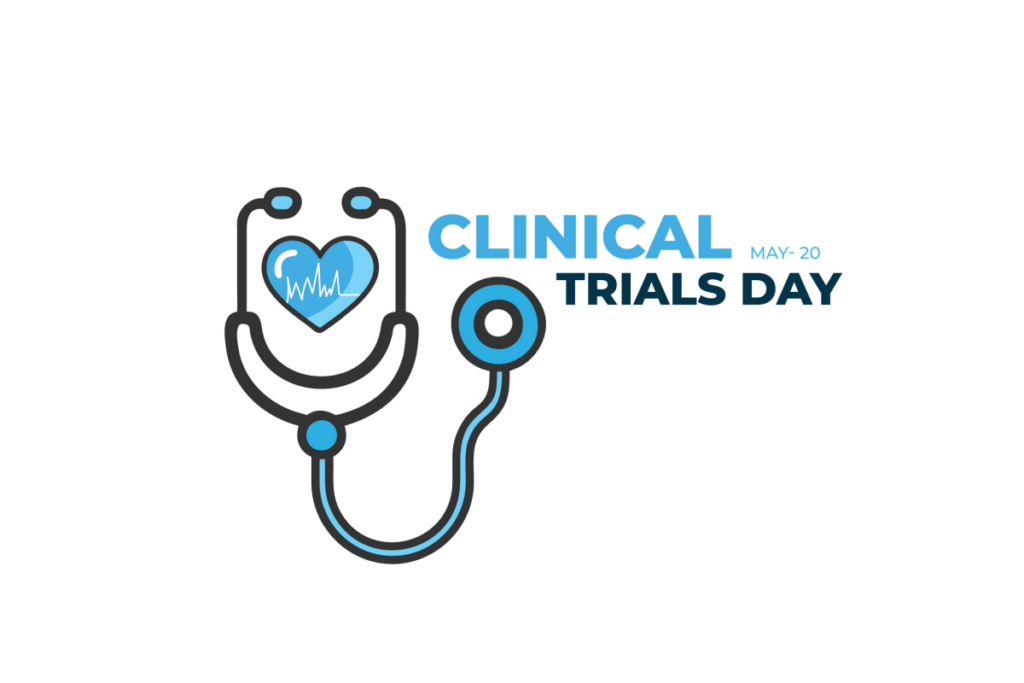International Clinical Trials Day 2025, observed annually on May 20, honors James Lind’s 1747 scurvy study, widely recognized as the first controlled clinical trial. Today, the occasion celebrates the contributions of researchers, participants and sponsors who drive innovation in clinical research.
Clinical Trials Day was first established by the Association of Clinical Research Professionals (ACRP) in 2005 and is now widely recognized across the global research community.
The theme of Clinical Trials Day 2025, “Collaborate. Innovate. Advance.” emphasizes the power of working together to shape the future of medical research through innovation and knowledge-sharing.
In that spirit, we’ve compiled some standout statistics from recent industry activity, along with real-world examples from 2024 to 2025. While not representative of every trial, they reflect critical trends shaping the field.
1. Record R&D Investment
In 2024, global biopharma R&D spending soared to $102 billion — a 10-year high up from $71 billion in 2023 — underscoring renewed investor confidence in late-stage pipelines.
For example, Vertex Pharmaceuticals alone invested $1.4 billion in R&D during Q1 2025, driving expansion of its gene-editing and rare disease programs. And AstraZeneca announced an approximately $570 million investment in Canada, aiming to be a pivotal hub for global clinical trials and drug development.
2. Return to Pre-Pandemic Trial Volumes
The clinical trial ecosystem is steadily returning to pre-pandemic volumes. WHO’s Global Observatory data show that in 2024 (recorded up to June 2024), 7,455 trials have been registered in India alone, followed by China with 7,106 and the US with 5,999 — far ahead of Japan’s 655. Among trials with an identified phase, Phase II accounts for the largest share, with 107,793 trials registered globally between 1999 and June 2024, with Statista noting 1,764 in Phase II in 2024 (recorded up to November 2024).
Echoing this, Citeline’s Trialtrove database recorded 9,959 Phase I to III clinical trials that began in 2023 — a 9.4% increase over 2022, reversing a 12.5% decline the year before.
3. Decentralized Models Become Routine
The global decentralized clinical trials (DCTs) market was valued at $9.63 billion in 2024, and is expected to reach $21.34 billion by 2030, growing at a compound annual growth rate (CAGR) of 14.16%. Key drivers of this market growth include the demand for faster drug development processes and the increasing need for patient-centric clinical trial models.
In recent DCT news, Tasso Inc. and ARUP Laboratories unveiled a partnership integrating Tasso’s user-friendly blood collection devices with ARUP’s comprehensive laboratory testing capabilities.
4. Time Saved Through AI Automation
In 2024, McKinsey reported that generative AI in clinical development — through auto-drafting documents, optimized site selection and real-time decision support — cut process costs by up to 50%, boosted net present value (NPV) by 20% and accelerated timelines by over 12 months.
Decentralization-focused technology provider Jeeva recently launched a partnership program to expand access to its AI-powered clinical trial management system (CTMS), aiming to streamline workflows, unify data coordination and enhance patient engagement in decentralized trials.
5. AI in Monitoring and Recruitment
Fueled by the rising prevalence of chronic diseases, increased adoption of telehealth services and advancements in AI technologies, the AI in remote patient monitoring (RPM) market is poised for rapid expansion — projected to grow from $1.96 billion in 2024 to $8.43 billion by 2030, at a 27.5% CAGR.
Further, trials increasingly require participants that match specific genetic and clinical profiles. AI helps meet this need by quickly scanning large datasets to identify eligible individuals — especially valuable in rare disease research, where matching criteria are narrow and patient pools are limited.
6. Participant Representation Still Elusive
Despite ongoing efforts to enhance diversity, the underrepresentation of minority populations in clinical trials remains a significant concern. For instance, while African Americans and Hispanic Americans constitute approximately 33% of the US population, they accounted for only 16% of clinical trial participants as of 2024.
This disparity is particularly troubling given that these groups often experience higher incidences of certain diseases, such as diabetes and specific cancers. The lack of representative participation can lead to less effective treatments and a limited understanding of how therapies perform across diverse populations.
It’s sobering to note that amid genuine advances in trial design and technology, efforts to improve participant representation are still facing headwinds. In January 2025, the FDA quietly took down its draft Diversity Action Plan guidance from its website, and by May, Novo Nordisk had elected to remove its own gender-quota policy for US operations.
7. Mid-Size Biopharma Drives Innovation
More than half of the 1,016 R&D deals in 2024 were between emerging biopharma firms. In a recent Citeline interview, industry experts noted that mid-sized biopharma companies are increasingly driving clinical trial innovation by adopting adaptive designs, decentralized models and real-world evidence approaches.
Biopharmas have shown capability in accelerating development timelines while maintaining scientific rigor and patient engagement.
8. Growth in Gene and Cell Therapy Trials
According to the American Society of Gene & Cell Therapy (ASGCT)-Citeline Q1 2025 report, the combined gene, cell and RNA therapy pipeline featured 4,418 active programs, including 2,155 gene therapies and 966 non-genetically modified cell therapies — with 79 new gene therapy trials (57% in oncology) and 27 new cell therapy trials (74% in non-oncology) initiated that quarter.
Underpinning this expansion, the US gene therapy market is projected to reach $22.23 billion by 2034, with delivery technologies such as AAV vectors expected to show the highest growth through 2034.
9. Precision Oncology’s Market Impact
Grand View Research estimated that the precision oncology market reached $98.9 billion in 2023, growing at a 10.9% CAGR through 2030. Oncology also remains the dominant segment of the precision diagnostics market, driven by rising cancer incidence and demand for early, accurate detection.
Early this year, UC San Diego School of Medicine launched a new program to accelerate precision oncology drug development across solid tumors. More recently, ConcertAI and Bayer partnered to use real-world data and AI modeling to streamline patient matching and trial design for oncology therapies.
10. Growing Complexity in Site Operations
Sites now manage an average of 22 distinct sponsor/CRO platforms per trial — spending roughly 12 hours each week on redundant data entry — according to ACRP’s March 2025 survey. Moreover, WCG data reveals that budget negotiations alone can stretch nine-plus weeks, even though only a small fraction of that time involves active review — often referred to as ‘white space,’ or waiting time in the workflow — exposing a hidden bottleneck in site workflows.
If you want your company to be featured on Xtalks.com, please email [email protected].












Join or login to leave a comment
JOIN LOGIN